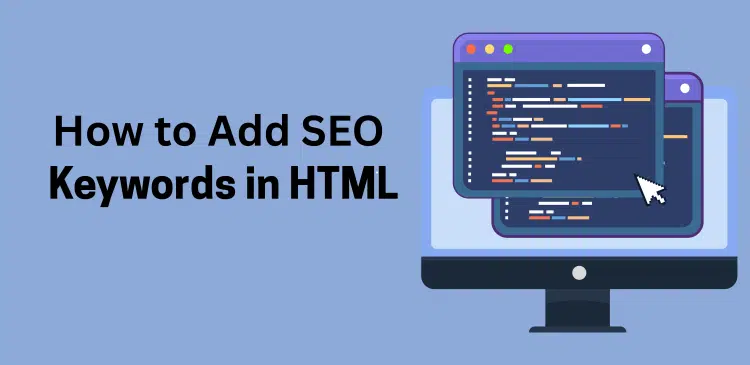How to Add SEO Keywords in HTML

Search engine optimization or SEO is a very important technique in the context of website design and development. One of the most basic principles is to include keywords in the HTML code. It refers to terms that you use in your site such that when users are searching for something, they will find your website easily. This article provides a simple explanation of the use of SEO keywords in HTML to make it simpler for application among readers.
Understanding SEO and Keywords
SEO is essentially a sophisticated method of optimizing your website to achieve high rankings in the leading search engines. Keywords are the terms that individuals input into search engines or the phrases utilized for navigating the web. To accomplish this, it’s important to include these terms in suitable locations within your HTML.
Why Keywords Matter
- Importance: Keywords tell search engines about the content of your page.
- Accessibility:Correct application of keywords can improve the accessibility of the site.
- Business Model: Keywords correspond to the user’s requests, which provides traffic from the target audience.
Strategic Keyword Placement in HTML
Ways of implementing SEO keywords in HTML are more than just use of keywords in the content without proper arrangement.
Here are the steps that you can follow for placing them:
- Title Tags
Undeniably, the `<title>` tag remains one of the most significant aspects for SEO considerations within any HTML-based website content. It will determine the headline of your webpage, and it is shown on the SERP as a headline or title for a specific result.
Best Practices:
Keynote: It is also very important that your primary or main keyword is provided first in the title tag.
Keep it Simple: More so, the tag should be concise, having between 50 and 60 characters maximum so that it doesn’t get cut off in search results.
Relate to Keyword: Incorporate the keyword into the content description of the page.
Example:
<title>Organic Gardening Tips for Beginners | YourSiteName</title>
- Meta Descriptions
Meta tags, although not being relevant to rankings, affect CTRs (click-through rates) out of search engine results pages. They give a summary of the content found in your web page.
Best Practices:
Secondary Keywords: It is advisable to use other related keywords that can complement your main one.
Keep It brief: Maximum of 150 to 160 characters.
Create a call-to-action (CTA): Use this link!
Example:
Learn the basics of organic gardening with the most important tips for those who are just starting out. Gardening tips: How to begin a garden.
- Header Tags
The header tags are the `<h1>, `<h2>, `<h3> and such that helps in organizing your content and informs search engines about content’s hierarchy.
Best Practices:
Primary Keyword in `<h1>`: It is preferable to put the primary assembled keyword into the `<h1>` tag, which will be the title of the page.
Headings including Secondary keywords: Heading 2 is to be used for secondary keywords while Heading 3 is not necessary but could be used.
Keyword Density: It is important that one does not use keywords in an excessive manner since it is considered as keyword stuffing.
Example:
<h1>Top Organic Gardening Tips for Beginners</h1>
<h2>Starting Your Garden</h2>
<h3>Choosing the Right Soil</h3>
- Alt Text for Images
It is worth noting that the alt text refers to the text that is used to describe the images, and it plays a major role in SEO and accessibility.
Best Practices:
Descriptive and Concise: Use clear and brief descriptions.
Keywords: Keyword messages must be woven into the text generically.
Example:
Picture of an organic vegetable garden with fresh organic produce in the publication.
- URL Structure
It is important to mention that a proper URL has a positive impact on the SEO of your site.
Best Practices:
Length: Do not write lengthy descriptions but ensure that it includes the vital keywords to help in the ranking of the page.
Hyphens: These help in the setting off of words according to comedy and tragedy rules and generally enhances the display of words affecting the readability on both user and SEO.
Example:
https://www.yoursite.com/organic-gardening-tips-for-beginners
- Content Optimization
Although it is not necessarily an HTML element, the content itself is relevant for SEO.
Best Practices:
Natural Integration: Use keywords naturally within your content.
Keyword Density: The keyword should be used within the content at a density of 1-2% to avoid over-stuffing.
Keyword Stemming and Pluralization: This is mostly recommending the use of other words that are quite close to the keywords.
Example:
Recently, many homeowners within neighborhoods choose to adopt organic gardening as a hobby for newcomers. With these tips, you will be able to develop a rich green garden that is free from synthetic chemicals.
